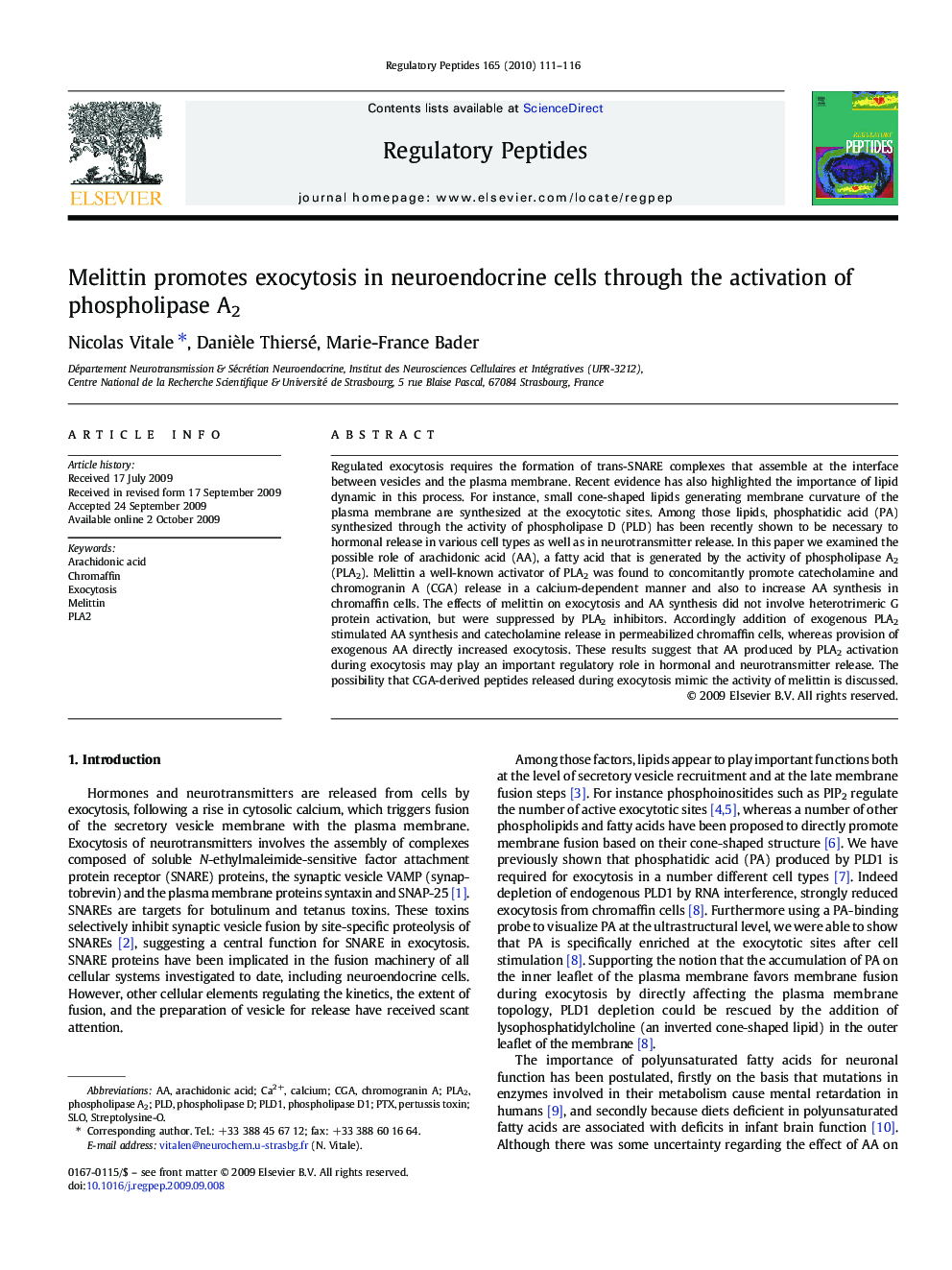| Article ID | Journal | Published Year | Pages | File Type |
|---|---|---|---|---|
| 2022645 | Regulatory Peptides | 2010 | 6 Pages |
Abstract
Regulated exocytosis requires the formation of trans-SNARE complexes that assemble at the interface between vesicles and the plasma membrane. Recent evidence has also highlighted the importance of lipid dynamic in this process. For instance, small cone-shaped lipids generating membrane curvature of the plasma membrane are synthesized at the exocytotic sites. Among those lipids, phosphatidic acid (PA) synthesized through the activity of phospholipase D (PLD) has been recently shown to be necessary to hormonal release in various cell types as well as in neurotransmitter release. In this paper we examined the possible role of arachidonic acid (AA), a fatty acid that is generated by the activity of phospholipase A2 (PLA2). Melittin a well-known activator of PLA2 was found to concomitantly promote catecholamine and chromogranin A (CGA) release in a calcium-dependent manner and also to increase AA synthesis in chromaffin cells. The effects of melittin on exocytosis and AA synthesis did not involve heterotrimeric G protein activation, but were suppressed by PLA2 inhibitors. Accordingly addition of exogenous PLA2 stimulated AA synthesis and catecholamine release in permeabilized chromaffin cells, whereas provision of exogenous AA directly increased exocytosis. These results suggest that AA produced by PLA2 activation during exocytosis may play an important regulatory role in hormonal and neurotransmitter release. The possibility that CGA-derived peptides released during exocytosis mimic the activity of melittin is discussed.
Keywords
Related Topics
Life Sciences
Biochemistry, Genetics and Molecular Biology
Biochemistry
Authors
Nicolas Vitale, Danièle Thiersé, Marie-France Bader,
